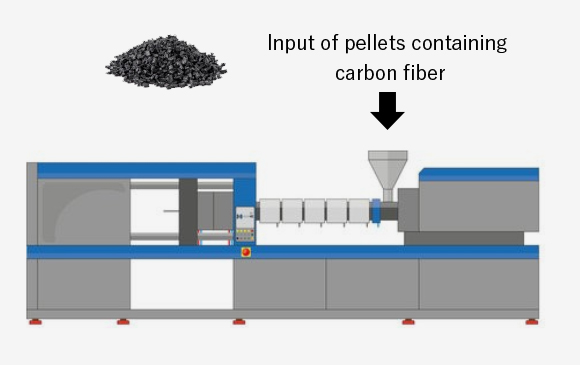What Are Carbon Fiber & Carbon Fiber Reinforced Plastics?
Molding Methods (Processing Methods) for Carbon Fiber & Carbon Fiber Reinforced Plastics
Carbon fiber is generally used in the composite form with base materials such as resin.
There are various molding methods (processing methods), depending on the shapes and characteristics of the final product.
In addition, progress is continuously being made with molding methods in order to improve the physical properties and appearance, shorten the molding time, etc.
Here, we introduce typical carbon fiber molding methods.
In-page menu
Pultrusion
This is a continuous molding method in which carbon fiber impregnated with liquid resin is drawn into a mold, and passed through it for heat-curing. It is suitable for molded products with a fixed cross-sectional shape, such as rods and pipes.
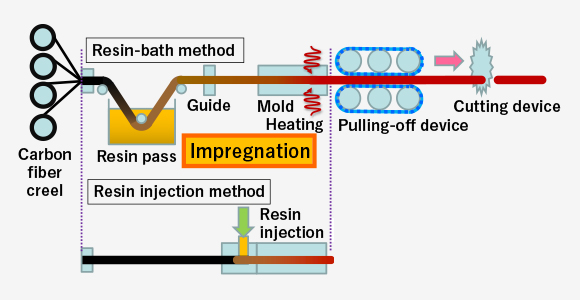
Filament-winding Molding
This is a molding method in which carbon fiber tow impregnated with liquid resin is wound around a mandrel, and then heat-cured. There are two versions of this method: (i) winding the carbon fiber while it is soaking in a resin bath; and (ii) winding the tow prepreg, which has been impregnated with resin. It is suitable for tube- and tank-shaped molded products.
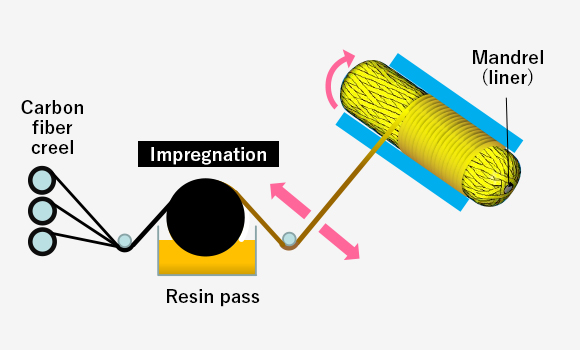
Resin Transfer Molding (RTM)
In this method, a carbon fiber preform (carbon fiber preformed into a product shape, fabric, etc.) is placed in a pair of male and female sealed molds, and liquid resin is press-filled, impregnated, and heat-cured. The method of curing by vacuum pressure using only a female mold is called vacuum-assisted RTM (VaRTM). RTM is suitable for small and medium-sized products, whereas VaRTM is suitable for medium-sized and large products.
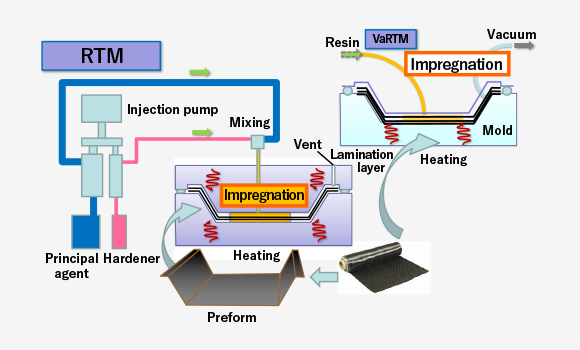
Press Molding
In this method, sheets impregnated with resin, such as prepreg or SMC, are stacked in a mold, and heat-cured while pressure is applied. Mitsubishi Chemical has established the prepreg compression molding (PCM) method using high-cycle and preform technology, and hybrid molding with SMC materials is also feasible. This molding method is suitable for mass-produced products.
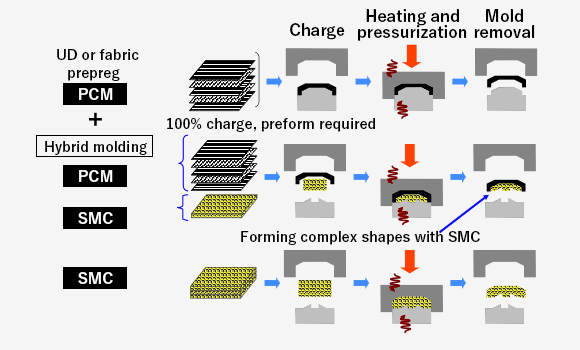
Autoclave Molding (AC)
Simply put, an autoclave is a pressure cooker. Prepreg is laminated onto a molding die, covered with bagging film (film used to create a vacuum), depressurized, and then heat-cured under pressure in an autoclave. This molding method is suitable for manufacturing high-quality and high-performance products, but the cost is high due to the long molding cycle.
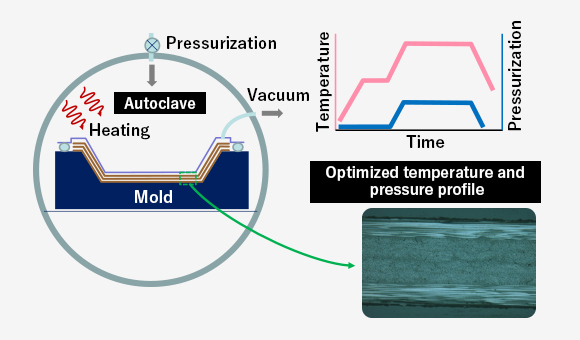
Oven Molding
As in autoclave molding, prepreg is laminated on a molding die, covered with bagging film, and depressurized, but the heat-curing is in a vacuum. Although slightly inferior to autoclave molding in terms of performance and quality, this molding method is inexpensive to operate, and can be used for relatively large molded products.
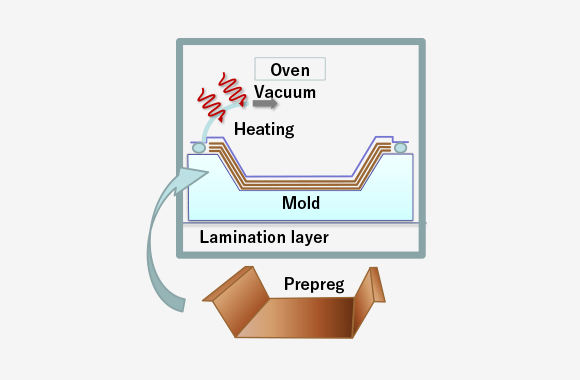
Sheet-wrap Molding
This is a molding method in which prepreg is wrapped around a mandrel (an iron core), taped, and heat-cured, after which the mandrel is removed. It is suitable for production of small and medium-sized products shaped as pipes and rolls. Mitsubishi Chemical's golf shafts and rolls are mainly produced by sheet-wrap molding.
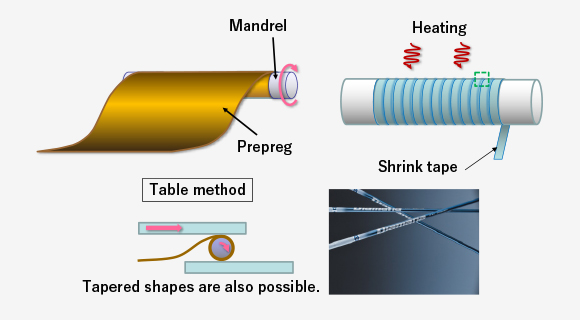
Injection Molding
This is a molding method in which the raw material, a pellet of thermoplastic resin (e.g. nylon, polycarbonate) reinforced with carbon fiber, is heated until it melts, and then injected into the cavity (void) of a mold. Although the mechanical properties are not as good, this molding method is suitable for molding complex shapes with short cycle times.
